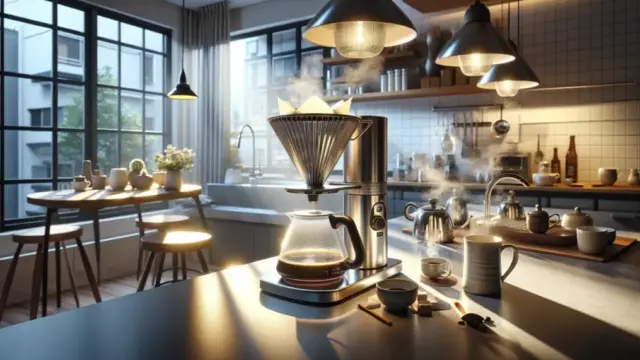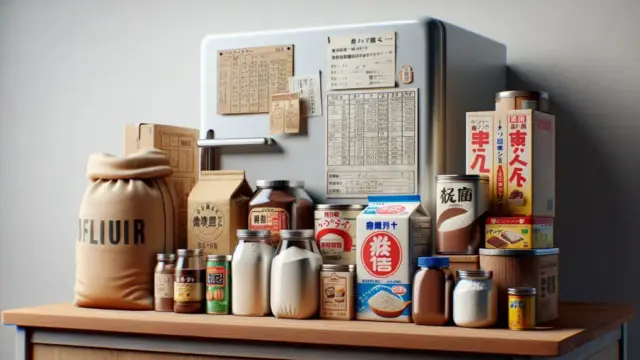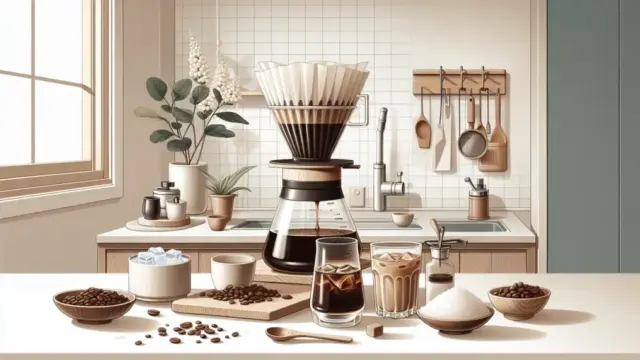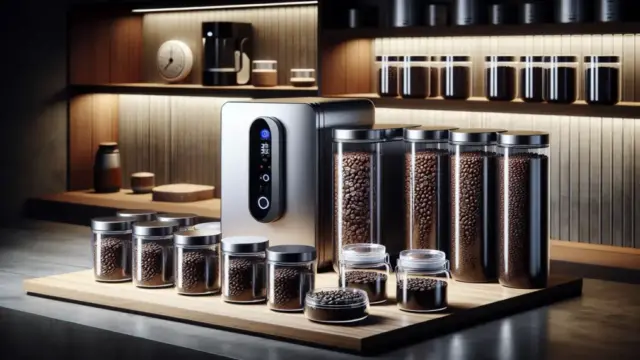If you’re a coffee enthusiast, you’re likely particular about your daily cup. Knowing the right way to store your coffee beans can significantly extend their flavor and freshness. By understanding which types of beans are best for room temperature storage and key tips to preserve their taste, you can elevate your daily coffee ritual into something truly special.
In this article, we’ll share some essential tips for storing coffee beans at room temperature. We’ll cover how storage methods vary depending on the type and roast level of your coffee, the conditions necessary to maintain flavor, and even how to choose the right container for your beans. So, stick with us till the end!
- Discover which coffee beans are best suited for room temperature storage
- Learn how storage conditions and container choices can help preserve flavor
- Simple storage habits you can incorporate into your daily life
The Best Coffee Beans for Room Temperature Storage
When it comes to storing coffee beans, the method can vary significantly depending on the type of bean. By selecting the right beans that are suitable for room temperature storage, you can preserve their flavor and aroma for a longer time. Understanding the differences between Arabica and Robusta beans, as well as how the roast level affects storage options, can help you enjoy a more delicious cup of coffee.
In this article, we’ll explore the differences between Arabica and Robusta beans and explain how the roasting level impacts their storage methods. By gaining this knowledge, you’ll deepen your understanding of how to choose and store coffee beans effectively.
Differences Between Arabica and Robusta Beans
Arabica beans are generally characterized by their sweetness and fruity flavors. In contrast, Robusta beans tend to have a stronger bitterness and a fuller body. Since Arabica beans are of higher quality, it’s especially important to pay attention to their storage methods to preserve their delicate flavors. Among Arabica beans, those that are lightly roasted are better suited for room temperature storage. Although Robusta beans have a robust flavor profile that can make storage a bit tricky, they can also be stored at room temperature if the environment is right.
When opting for room temperature storage, it’s crucial to choose beans with their unique characteristics in mind. Arabica beans, in particular, are sensitive to moisture and temperature, so be mindful of the storage conditions.
- Arabica beans are known for their sweetness and fruitiness
- Robusta beans have a strong bitterness and a full body
- Choosing a storage method that considers the bean’s characteristics is essential
The Relationship Between Roast Level and Storage Methods
Roast level plays a significant role in the flavor of coffee beans. Lightly roasted beans tend to have a pronounced acidity, making proper storage essential to preserving their flavor. On the other hand, darker roasted beans are generally easier to store, but they are also more prone to flavor degradation, so extra care is needed. When storing at room temperature, selecting storage methods based on the roast level can help enhance the beans’ qualities.
In particular, darker roasted beans are more stable in flavor, making them well-suited for room temperature storage. However, depending on the bean’s characteristics, experimenting with storage conditions can allow you to enjoy even better flavors.
- Lightly roasted beans require careful storage to maintain flavor
- Darkly roasted beans are relatively easy to store
- It’s important to choose storage methods that align with the roast level
How to Preserve the Flavor of Coffee Beans
To keep coffee beans flavorful for longer, the way you store them is crucial. Humidity and temperature play significant roles in maintaining the beans’ freshness and taste. Additionally, protecting the beans from light and oxygen is essential for preserving their quality. In this section, we’ll delve into the optimal storage conditions for ensuring your coffee beans retain their delightful flavor.
By understanding the right storage conditions, you can maximize the enjoyment of your coffee. Apply these tips to enhance your coffee experience!
The Impact of Humidity and Temperature
Coffee beans are sensitive to both humidity and temperature. In high-humidity environments, beans can absorb moisture, which can degrade their flavor. Similarly, excessive heat can lead to the oxidation of the oils in the beans, altering their taste. Ideally, coffee beans should be stored in a cool, dry place with stable temperatures.
Even if room temperature storage is acceptable, it’s important to choose a cool spot away from direct sunlight. This will help maintain the beans’ freshness and extend their flavor life.
- High humidity can compromise the flavor of the beans.
- High temperatures promote the oxidation of oils.
- It’s crucial to avoid direct sunlight and store in a cool place.
Protecting from Light and Oxygen
Light and oxygen are also key factors in coffee bean storage. Particularly, light can significantly degrade the beans’ flavor. Avoid storing beans in transparent containers; instead, opt for opaque, light-resistant ones. Moreover, exposure to oxygen can lead to oxidation, which diminishes flavor, so using airtight containers is highly recommended.
By choosing storage containers that seal the beans tightly, you can shield them from both oxygen and light. This way, you can enjoy your coffee beans while keeping them fresh and flavorful.
If you’d like to learn more about how to store coffee beans, check out this article: “A Guide to Preserving the Flavor of Coffee Beans.” It offers great techniques and tips to enrich your coffee life, so be sure to give it a look!
- Light can degrade the flavor of the beans.
- Using light-resistant containers is advisable.
- Protecting from oxygen with airtight containers is important.
How to Choose and Use Coffee Storage Containers
When it comes to storing coffee beans, selecting the right container is crucial. Using the correct type of container can help preserve the flavor and extend the shelf life of your beans. The key point is to choose a container that provides an airtight seal, as this is essential for maintaining the quality of the beans. In this section, we’ll delve into the importance of storage containers and the advantages of different materials.
By selecting the appropriate storage container, you’ll be able to maximize the flavor of your coffee beans and enjoy fresh coffee whenever you like. We hope this guide helps you in making the right choice!
The Importance of Airtight Containers
To keep your coffee beans fresh, an airtight container is a must. Beans exposed to oxygen and moisture can lose their flavor over time. By storing them in a sealed container, you can effectively protect them from these detrimental factors.
Moreover, airtight containers also shield your beans from external odors. This is especially important if you’re storing them in the refrigerator or pantry, where they might absorb smells from other foods. With proper storage, you can enjoy your coffee’s flavor without compromise.
- Airtight containers protect beans from oxygen and moisture
- They also serve to guard against external odors
- Essential for preserving flavor over time
Benefits of Different Storage Material Types
There are various materials available for storage containers, each with its own benefits. For instance, glass containers offer high airtightness and minimal odor transfer, ensuring that the flavor of your coffee beans is preserved. However, it’s important to choose opaque designs to avoid direct sunlight exposure.
On the other hand, plastic containers are lightweight and convenient, making them easy to transport. Just be mindful of their heat and cold resistance. Metal containers are durable and also provide a good seal, but it’s advisable to choose materials that won’t rust on the inside.
If you’re curious about how to choose and use coffee bean storage containers, you might also find this article helpful: “How to Store Fresh Coffee Beans and Its Importance.” It covers specific storage methods to maintain bean freshness and explains why this is so important, so be sure to check it out!
- Glass containers offer high airtightness with minimal odor transfer
- Plastic containers are lightweight and handy, but watch for heat resistance
- Metal containers are durable and provide effective sealing
Simple Practices for Storing Coffee Beans in Everyday Life
When it comes to storing coffee beans, there are several easy habits you can incorporate into your daily routine. Proper handling of beans after opening the package and regular freshness checks are crucial for maintaining their quality. By adopting these practices, you can enjoy fresh coffee every day.
In this article, we’ll explore the best ways to handle your coffee beans after opening them, as well as how to check their freshness. With just a few adjustments, you can elevate your coffee experience.
Handling Coffee Beans After Opening
Once you’ve opened your coffee beans, it’s important to handle them properly. Aim to use them up as quickly as possible. Since beans tend to lose freshness quickly, it’s effective to portion out what you need for each use. After opening, transfer the beans to an airtight container to protect them from moisture and oxygen.
Additionally, always use clean tools when handling the beans, and make sure your hands are clean as well. This will help preserve the beans’ flavor, allowing you to enjoy a more delicious cup of coffee.
- Use the beans up as quickly as possible after opening.
- Transfer to an airtight container to protect against moisture.
- Handle with clean tools and hands for the best flavor.
Regular Freshness Check Methods
To keep your coffee beans fresh, make it a habit to check them regularly. Start by visually inspecting the beans for any changes in color or shape. As freshness declines, you may notice changes in color or the emergence of oils on the surface. Smell is another key indicator—fresh beans have a rich aroma, while a diminished scent signals a loss of freshness.
It’s also helpful to keep track of how long you’ve been storing the beans and to choose the newest beans for your brews. This way, you can consistently enjoy the best flavors.
If you’re interested in delving deeper into coffee storage, we recommend checking out this article for more insights: “How to Store Green Coffee Beans to Preserve Freshness.” Understanding the key points of storage will help you enjoy even better coffee. Be sure to take a look!
- Visually check the beans for color and shape.
- Pay attention to any changes in aroma.
- Keep a record of storage time and select your beans wisely.
In Conclusion
By keeping a few key points in mind for storing coffee beans at room temperature, you can enjoy fresh and delicious coffee anytime. First and foremost, it’s essential to choose the right storage method based on the type of beans and their roast level. Additionally, pay attention to external factors like humidity, temperature, light, and oxygen. Using an airtight container will help preserve the flavor of your coffee.
Moreover, incorporating easy storage habits into your daily life will make it simpler to handle the beans after opening and check their freshness, allowing you to savor great coffee for an extended period. By being mindful of these tips, you can enhance your coffee experience significantly.
- Choosing the right storage method based on bean type and roast level is crucial.
- Use airtight containers to protect beans from humidity, temperature, light, and oxygen.
- Maintain freshness with practical storage habits in your daily routine.
We encourage you to revisit your own coffee bean storage methods based on these tips. If you have any thoughts or feedback, please share them in the comments!






































































Comment